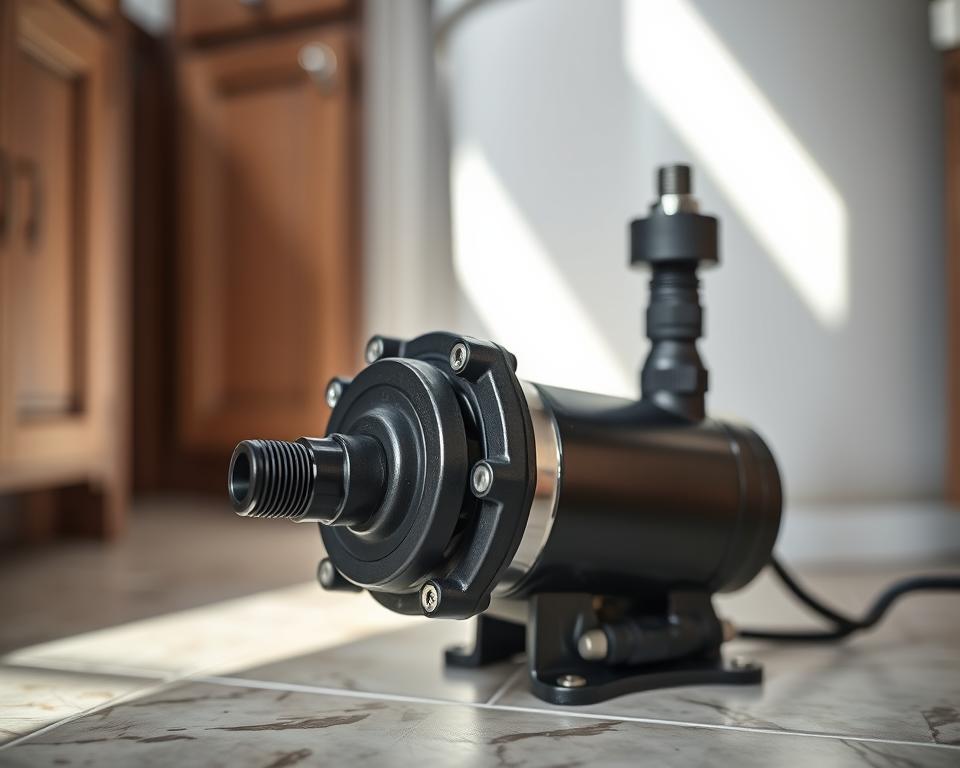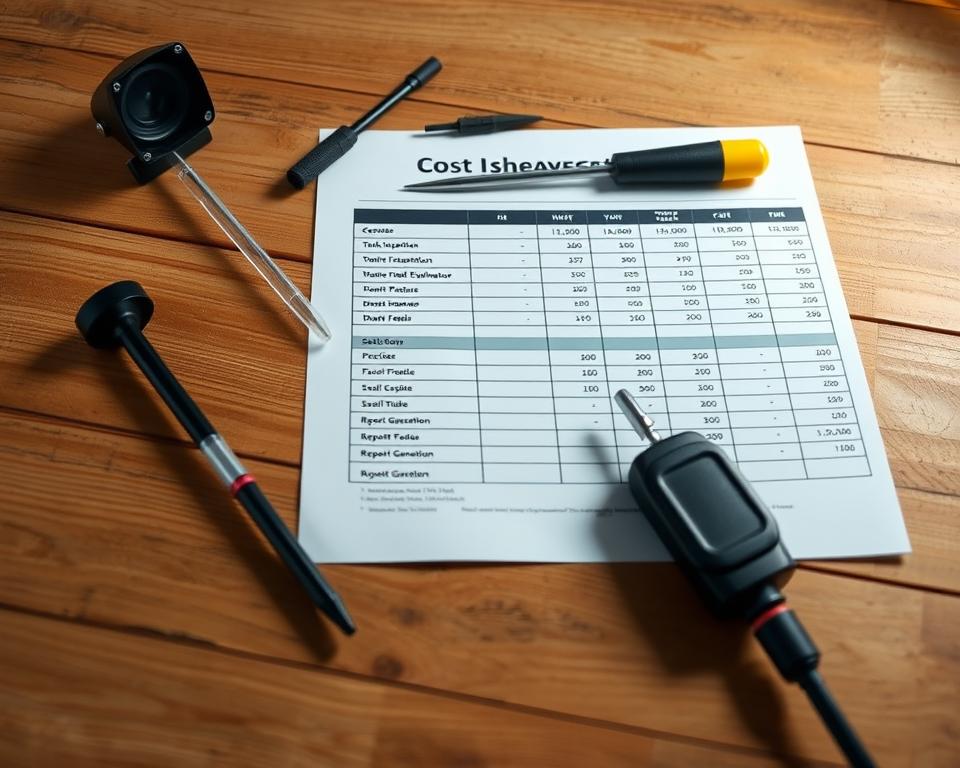How Often to Check Your Barstow RV Water Pump Pressure Tank Air Level
Rapid & Steadfast RV Holding Reservoir Pumping Service
Ever pondered the value of RV tank pumping for a seamless journey? While roaming the great outdoors, proper RV waste disposal and dependable Septic solutions are critical but often disregarded. At All-In Sanitation, we deliver our patrons timely and efficient waste-management services to improve your RV adventure. You surely don’t want RV septic pumping service near me problems to derail your adventure!
Understanding RV Waste Systems
RV waste installations are integral for the functionality of mobile homes. They include holding tanks that collect wastewater during travel. There are two kinds of tanks: one for toilet waste, holding human waste, and another for sink water, from sinks and showers.
RV waste set-ups are distinct from stationary sewage networks in homes. They must perform reliably in multiple settings. Their build securely holds waste until it can be responsibly disposed of. This keeps cleanliness inside and outside the vehicle. RVs are equipped with a disposal setup, including spigots, hoses, and connectors. This makes dumping at dump stations easier.
Knowing RV waste systems is key for their maintenance. It teaches users on how to properly dispose of waste. Proper care prolongs the lifespan of these units. It guarantees travels remain pleasant and smooth.
The Value of Regular RV Holding Tank Pumping
Guaranteeing your RV’s waste setup operates smoothly demands regular tank pumping. Poor waste management can lead to offensive smells and overflows, messing up your journey. By following a proper disposal routine, you increase your RV’s longevity and improve your travel enjoyment.
An important part of annual RV upkeep is planning pump-outs according to how you use your RV. The size of your tank and how often you use your RV largely affect how frequently you should empty the reservoirs. Following a consistent pumping schedule can ward off unexpected problems, keeping your RV trustworthy and odorless.
Many RV specialists recommend keeping a steady schedule for tank pumping. This strategy lessens problems and enhances your traveling enjoyment. Properly timing tank pumpings demonstrates its value in keeping a fresh, pleasant RV environment.

| Tank Size (Gallons) | Usage Frequency (Days) | Recommended Pumping Schedule (Weeks) | 20 | 1-2 | 30 | 3-4 | 2-3 | 40 | 5-7 | 50+ | 7+ | 4-6 |
|---|
Explaining RV Holding Tank Pumping Support?
RV tank pumping assistance is essential for RV enthusiasts, dedicated to the specialised extraction of both black-water and grey-water from RV holding tanks. A crew of professionals evaluate the situation upon their arrival, utilising specialised gear connected to the RV’s plumbing pipes. Their know-how makes sure the clean-up process is both secure and comprehensive.
The operation commences as technicians skillfully pump out waste, leaving no trace behind. They apply industry-grade tools and their knowledge to swiftly finish the job, all while following environmental regulations. Choosing a reputable company, like All in Sanitation, means black-water and grey-water disposal is handled with maximum caution and professionalism.
Why Choose All in Sanitation?
Opting for All in Sanitation for RV tank pumping signifies choosing trustworthiness and skill. This family-owned operation prioritizes trusted RV waste services customised to every customer’s unique needs. Their dedication to customer satisfaction is evident through custom attention. Every engagement exceeds strict standards of care.
Affordable pricing distinguishes All in Sanitation in the marketplace. Customers get exceptional value while the company keeps eco-friendly practices. This philosophy illustrates their environmental respect, positioning them as a green RV waste management option.
The staff’s safety practices are another key aspect. Every employee is thoroughly trained in responsible waste management. This ensures your property stays tidy and secure during the pumping visit. Opting for All in Sanitation delivers swift solutions that prioritizes client and public safety.
To summarize, All in Sanitation stands out by dedicating themselves to outstanding customer care, reasonable rates, and a stringent commitment to safety. These attributes make them a top-tier option for anyone seeking RV tank pumping assistance.
Benefits of On-Site Pumping Solutions
For RV owners, on-site pumping is indispensable for continuous mobile living. All in Sanitation offers specialised mobile Septic services for RV users. These solutions are suited whether set up at a campsite, home, or by the roadside. They enable adventurers to deal with sewage disposal right where they are, ensuring their journey remains continuous.
Mobile Septic support simplify waste management and improve the camping experience. They make RV waste removal straightforward and worry-free. RVers can travel assuredly, knowing support is a phone call away. This on-site choice provides adaptability that standard pumping can’t, permitting efficient waste handling, even off the beaten path.
RV Holding Tank Pumping Procedure Process
The process to pump holding tanks in RVs ensures waste is handled efficiently. It kicks off with arranging a visit that matches the RV owner’s schedule. This planning is essential for a trouble-free appointment.
Technicians first check how much waste is in the holding tank upon arrival. They then use professional equipment for pumping. This makes sure all waste is removed efficiently, avoiding any spillage. The equipment is engineered for maximum suction, speeding up the process.
After pumping, the next step is disposing of the waste safely. This meets local environmental rules. Customers can trust that their waste is managed with diligence. Skilled professionals guarantee a thorough job from start to finish.
Clues Your RV Holding Tank Needs Pumping
Recognising when to pump your RV tank is essential for maintaining your plumbing in order. There are obvious indicators that show the need for prompt action. By keeping an eye out for these signs, you can address issues before they worsen:
Lazy Flow: A telltale sign of a full tank is when your sink or shower drains slowly. This poor flow indicates a buildup that demands attention.
Bad Odors: If you start noticing bad smells from your RV’s plumbing, it could be a clue to examine the tank. These odors indicate that the tank is getting full and needs a look.
Overflowing Waste: Seeing waste overflow is an critical indication that your tank needs pumping. This condition demands quick action to avoid health risks and damage.
Level Warnings: Modern RVs often have monitors to check tank levels. It’s important to monitor these indicators to know when to pump the tank.
Adding regular inspections part of your maintenance routine is prudent. Being able to monitor your tank levels can greatly enhance your RV journey. It also prolongs the lifespan of your plumbing system.
DIY vs Professional RV Waste Management
RV waste management is a involved task. DIY options might at first appear cheap. Yet, they require a solid grasp of sanitary principles to sidestep potential dangers. These dangers include mismanagement and health hazards.
A comparison with professional RV support, like those from All in Sanitation, reveals major advantages. Professionals are skilled at the nuances of waste management. Their know-how secures the secure and smooth disposal of waste, avoiding costly errors and health issues from improper practices.
While DIY options appeal to veteran RV owners, they demand substantial time and effort. Buying the correct tools and learning maintenance protocols can burden. Often, the ease provided by professionals outweighs the monetary benefits of a DIY method.
In summary, weighing DIY versus professional RV waste management aids owners in making wise decisions. It’s crucial to weigh cost against safety and effectiveness. This balance will guide owners towards the best waste management approach.
Learning About RV Holding Tank Pump Out
The task of pumping out an RV’s holding tank is critical for handling sewage effectively. Waste tank systems retain sewage until it’s time for removal, ensuring RVs hygienic. These systems can contain a significant volume, allowing travellers to go long distances without needing to dump waste frequently.
Opting for a dependable service like All in Sanitation for RV holding tank pump-outs is important. Such solutions deliver swift and secure waste removal. Regularly scheduled pump-outs prevent backflows and unpleasant smells. This creates a significantly better camping experience. Professional management of this task also boosts your RV waste tank’s functionality and lifespan.
Customer Reviews for All in Sanitation
Customers often commend All in Sanitation’s outstanding service. They’re particularly satisfied with the efficient RV tank pumping. Through numerous favourable testimonials, it’s obvious that All in Sanitation provides a smooth process. This has encouraged many to eagerly choose them for their needs.
The importance of punctual service is a common theme. For example, one client highlighted how the team’s on-time arrival elevated the session. This punctuality is a major reason people keep choosing All in Sanitation for their RV sanitation requirements.
Additionally, the company’s professionalism shines in customer feedback. Clients applaud the skilled technicians for their detailed approach to every task. This attention to detail not only enhances the RV experience but also solidifies customer relationships.
To wrap up, the glowing reports about All in Sanitation prove their dedication to excellence and customer satisfaction. This surely makes for a richer RV adventure.
The Cost of RV Tank Pumping Services
For RV owners, grasping the costs of RV tank pumping services is important. Pricing differs significantly, influenced by several aspects. The volume of the tank counts, with larger units required more effort and resources for pumping, which raises the cost.
The location notably affects prices too. In city regions, costs might be steeper due to increased operational expenses. However, outback areas may offer better rates. The need for additional tasks, like deep cleaning or adding deodorizers, also plays a role in the final price.
All in Sanitation is committed to delivering budget-friendly waste management options. They guarantee their services are both high-quality and reasonably priced. Here’s a concise overview of what RV owners might expect to pay for tank pumping support:
Awareness of these factors helps RV owners to make smarter choices. They can select options that align with their needs while staying within budget. All in Sanitation is dedicated to clear pricing, making sure clients understand the cost of RV tank pumping support beforehand.
Conclusion
For every RV owner, comprehending the advantages of RV tank pumping support is vital. It’s key for ensuring your RV in top shape and ensuring pleasant journeys. By regularly pumping your tank, you sidestep bad odors and mechanical issues. This care also enhances your RV’s waste facility’s longevity.
All in Sanitation stands out in delivering personalized waste management services. They offer on-site pumping services, allowing RV owners to concentrate on their adventures while professionals take care of the waste. Their commitment to customer satisfaction establishes All in Sanitation as your go-to for waste disposal needs.
Proactive maintenance, such as frequent tank pumping, improves the travel experience, creating peace of mind on the road. Choosing expert support from All in Sanitation guarantees you’re embracing unparalleled convenience and excellence for your RV’s journey.

